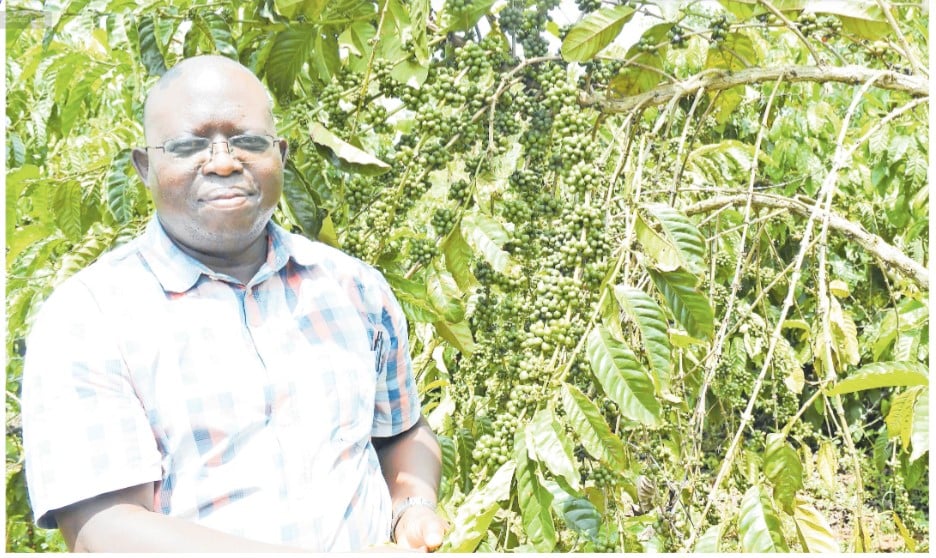
The Finance ministry’s Permanent Secretary and Secretary to the Treasury (PSST), Mr Ramathan Ggoobi, at the two-day 8th Economic Growth Forum. PHOTO | COURTESY OF MINISTRY OF FINANCE X HANDLE
Delegates gathered to chart paths to grow Uganda’s economy tenfold over the next five years were forced to pause deliberations for nearly 20 minutes after a power outage left the meeting room in darkness.
Minutes before the blackout, Dr Richard Newfarmer, the country director at the International Growth Centre (IGC)—a body that works with policymakers in developing countries to promote inclusive and sustainable growth through path breaking research—had stressed the need for Uganda to address some basics and structural hurdles of a similar nature that grossly stifle productivity and obstruct the realisation of its ambitious plans.
Uganda hopes to grow her economy from the current $50 billion to $500 billion in less than two decades, the Finance ministry’s Permanent Secretary and Secretary to the Treasury (PSST), Mr Ramathan Ggoobi, said on Thursday, to a room filled with economists, academics and technocrats who attended the 8th High-level Economic Forum.
The plan aims to double the GDP every five years, raise per capita GDP from $1,146 to $7,000 by 2040, and increase savings from 20 percent to 40 percent of GDP by 2040. The government also hopes to raise the share of exports in GDP from 12 percent to 50 percent and increase annual FDI inflows from $2.9 billion in 2022 to $50 billion, Mr Ggoobi said
Mr Moses Bekabye, the technical advisor at the ministry, explained that they have benchmarked, and picked lessons from countries such as South Korea, Singapore, Malaysia and Chile, which have been able to achieve exponential development in a span of two decades.
As at the time of the revelation, the detailed strategy remained unseen but is expected to be implemented through the National Development Plan IV that will run for the next five years starting next year. The strategy was approved by the Cabinet in March. Yet key highlights provided by officials from the Finance ministry did not sound new, except for the targets.
According to the PSST, the government is focusing on four key sectors—agro industrialisation; mineral development; tourism; as well as science and technology as the magic bullets. These have been christened ATMS.
So, what is new?
A small peak into recent history would reveal this is nothing new. The same sectors were fronted to drive the county into the middle income status, which remains an elusive dream. Mr Ggoobi nevertheless explained that although there is nothing new in terms of the sectors targeted, what is new is the how. This will involve keenly enforcing guidelines, laws and policies, budget prioritisation and bridge the gap between politics and the country’s aspirations.
The government also intends to increase exports, ease access to credit in the agro-industrialisation sector and the private sector, put in place predictable policies, and counter negative publicity to drive up tourism potential.
“We are cleaning up. We are struggling to hit some targets, but we have a huge potential that we are not taking advantage of. For example enforcing policies, regulations and policies. Going forward certain things will change. When you’re on the road moving, it is chaos because the state has been enforcing some rules to the game. But by enforcing the rules, continuing with the same areas we have been targeting and fine-tuning them, we will be able to upgrade the performance,” the PSST said.
“We want to skill Ugandans more. You don’t expect people to deliver when you have not tooled them. But also tooling them in the form of budget provisions. Some of these things we have been talking about have been suffering budget tokenism. We say this is a priority but the priority does not have enough allocation. When we say the priority is agro industrialisation and want to increase productivity by giving those inputs, however much you provide money but the inputs are fake and you don’t enforce standards, you are not doing anything,” he added.
How will you benefit?
According to PSST Ggoobi, the government intends “to support private sector access markets in the region and beyond.” He acknowledges a slippery political economy, but remains confident that consensus will be built.
“In the new agenda, we are saying we need to match policy and goal consensus. Some things may be reversed because of politics, but nowadays some things are reversed on policy… There are certain things that we have been politicising. For example, look at our city, should we continue because there is politics and people will be offended. Sometimes good economics is also good politics,” he opined.
The tenfold strategy will translate into bigger income for every Ugandan, creation of jobs and increase in household income. “Who produces this GDP? It is Ugandans. Whenever a rich person gets richer, they invest in more businesses, employ more Ugandans and these Ugandans get wages, others supply and the multiplier effect increases,” Mr Ggoobi said.





